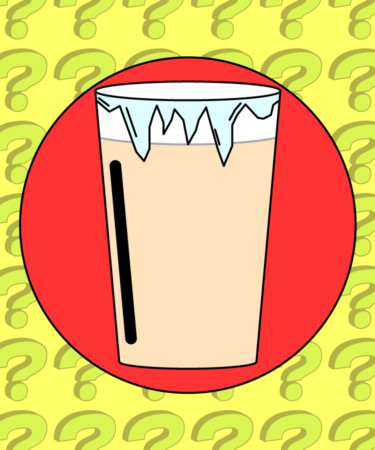This October, VinePair is celebrating our second annual American Beer Month. From beer style basics to unexpected trends (pickle beer, anyone?), to historical deep dives and new developments in package design, expect an exploration of all that’s happening in breweries and taprooms across the United States all month long.
While there’s plenty to argue about in the drinks world, there’s one thing everyone from cicerones to winemakers can agree on: There’s nothing more refreshing than a cold beer. And many beer lovers do their best to chill their brews down to the lowest temperatures possible.
But as we search for beers as cold as the Rockies, some pros warn against taking extreme measures to make it happen. With this in mind, VinePair consulted Zach Mack, owner of NYC’s ABC Beer Co., to answer the question: When it comes to beer, how cold is too cold?
For most beers, the ideal serving temperature ranges from 38 to 55 degrees Fahrenheit, with lighter-bodied beers ideally served at chillier temperatures than fuller-bodied varieties such as stouts, porters, and Belgian dubbels and tripels. When drinking at home, this most often means serving beers straight out of the refrigerator, which has a temperature of 40 degrees on average. At bars, beer straight from the tap has plenty of chill.
But some bars and home enthusiasts go a step further, frosting their glasses to prove to thirsty guests just how cold their drink is. But beer geeks like Mack advise against this practice for a variety of reasons.
First, frosting a glass doesn’t actually cool a beer down if it’s already being poured at the proper temperature. “Everybody’s like, ‘I can make the beer even colder, even though I’m pouring from a freezing cold keg,’” Mack says. But as he explains, that’s not the case. “It’s just kind of stunty, and it’s really more for the aesthetic where you pick up a glass and it feels freezing cold in your hand.”
In addition, freezer storage can create tiny ice crystals on the surface of a glass, which, as Mack explains, “create nucleation points for the carbonation.” This in turn causes your beer to foam up instantly and reach an ice-cold temperature for a short period of time. “But then it warms right back up to just above freezing, and you essentially just end up with a cup full of flat beer,” Mack says. As a proper pour is served with a half an ounce of foam on top, such a fizzle can be detrimental to the flavor and aroma of the pint, which are released through carbonation.
Another reason to refrain from frosting your glasses? Cleanliness. “When you’re storing the glass in the fridge, it picks up all the other smells in the fridge or the freezer,” Mack says. “So it’s kind of gross in that way, too.”
Though many dive bars have and will continue to frost their glasses as a point of pride, you’d be hard-pressed to find a quality beer bar that does so. So the next time you want to impress the beer geeks in your life, be sure to serve their brews straight from the fridge or keg in a beer- clean glass — no extra tricks necessary.
